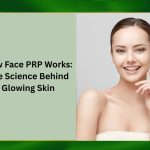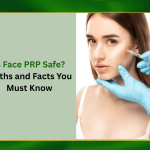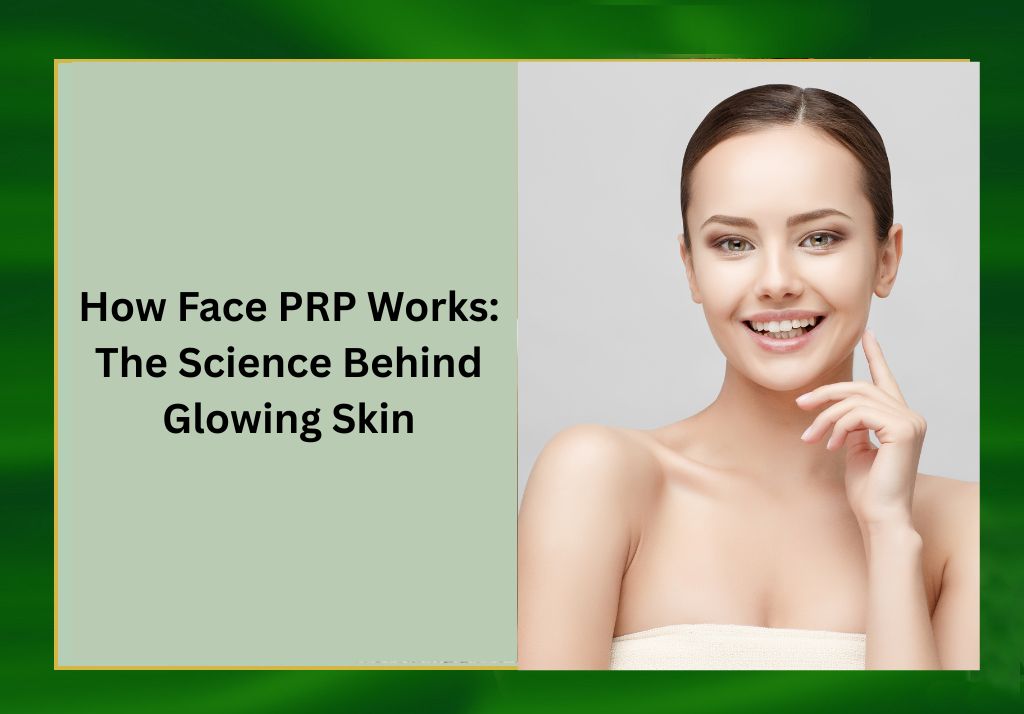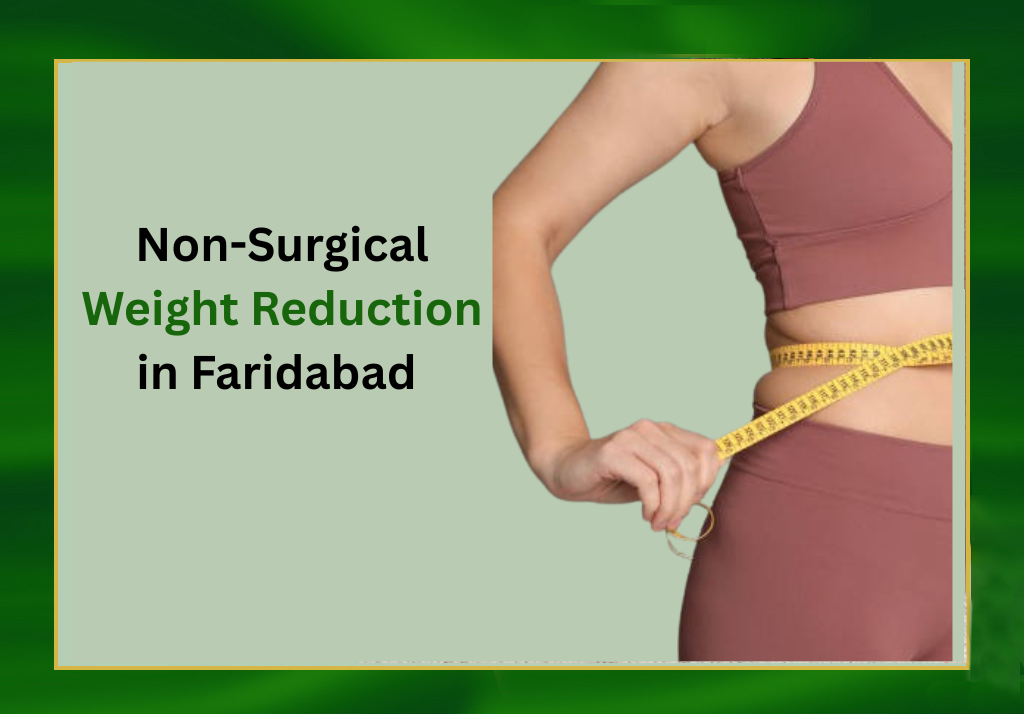PRP, short for Platelet-Rich Plasma, is a cutting-edge cosmetic treatment specialist that uses your own blood to promote natural skin rejuvenation. Unlike artificial fillers or chemicals, PRP relies on your body’s healing components to revive your skin from within.
A small amount of your blood is drawn and placed in a centrifuge, which spins it to separate the platelet-rich plasma from the red blood cells. This golden-colored PRP is then re-injected or micro-needled into your facial skin to stimulate collagen production and tissue repair.
PRP has become increasingly popular in dermatology and medical aesthetics, thanks to its natural approach, minimal downtime, and visible skin-enhancing results. Celebrities and skincare enthusiasts alike have embraced it for its glow-boosting effects making it a favorite non-surgical facial treatment.
What Does Face PRP Do for Your Skin?
The benefits of PRP go far beyond just a temporary glow. Here’s how Face PRP actively works to improve your skin’s health and appearance:
- Boosts Collagen and Elastin Production: The growth factors in PRP stimulate fibroblasts cells responsible for producing collagen and elastin. This leads to firmer, plumper skin over time.
- Improves Skin Tone and Texture: Whether you’re dealing with dullness, enlarged pores, or uneven skin tone, PRP helps refine texture and adds radiance by enhancing cellular turnover.
- Reduces Fine Lines, Wrinkles, and Acne Scars: As your skin regenerates and collagen levels rise, fine lines smooth out and acne scars fade gradually, offering a youthful, even finish.
- Promotes Natural Skin Regeneration: Unlike topical creams or chemical peels, PRP works deep in the dermis to trigger the body’s intrinsic repair mechanisms making the glow long-lasting and biologically driven.
Many users report visible results after just a few sessions, with full effects becoming noticeable over 4–6 weeks. It’s a powerful option for those seeking a safe, regenerative, and long-term solution for glowing skin.
The Science Behind PRP: What’s in Your Platelets?
What makes PRP such a game-changer lies in the platelets themselves tiny blood components loaded with growth factors that initiate healing. When PRP is isolated and applied to the skin, it delivers a concentrated dose of bioactive proteins such as:
- PDGF (Platelet-Derived Growth Factor) – promotes cell replication and blood vessel growth
- VEGF (Vascular Endothelial Growth Factor) – improves circulation by encouraging new blood vessel formation
- EGF (Epidermal Growth Factor) – helps with cell turnover and wound healing
- TGF-β (Transforming Growth Factor Beta) – enhances tissue regeneration and controls inflammation
These growth factors interact with skin cells, boosting collagen synthesis, stimulating stem cells, and increasing microcirculation all of which lead to stronger, healthier, more radiant skin.
One of the major advantages of PRP is that it’s autologous sourced from your own blood. This drastically reduces the risk of allergic reactions, infections, or rejection. In fact, the body welcomes it as a natural healing agent, making PRP both scientifically sound and biologically safe.
Step-by-Step: How Face PRP Treatment is Done
Understanding the PRP facial process can help ease anxieties, set realistic expectations, and ensure you’re fully prepared for your session. Here’s a detailed breakdown of how the Face PRP treatment unfolds, step by step:
Step 1: Blood Collection
The procedure begins with a standard blood draw. Around 10 to 15 ml of blood is taken from your arm, much like any regular blood test. This is a quick, nearly painless step, performed using a sterile syringe and under professional supervision. This sample will serve as the foundation of your treatment the source of the powerful platelet-rich plasma that rejuvenates your skin.
Step 2: Centrifugation
Once your blood is collected, it is immediately placed into a centrifuge a high-speed spinning machine designed to separate the different components of blood based on their densities. Within 5 to 10 minutes, the blood separates into three distinct layers:
- Red blood cells (heaviest)
- Platelet-poor plasma (lightest)
- Platelet-rich plasma (PRP) – the golden, middle layer
This golden fluid is what your skin needs. It’s rich in platelets and growth factors that help repair tissue, promote healing, and regenerate collagen.
Step 3: Skin Preparation
Before applying PRP, your face is cleansed thoroughly to remove any dirt, oil, or makeup. This is followed by the application of a topical anesthetic cream to numb the skin. The numbing cream is usually left on for 20 to 30 minutes to ensure you feel minimal discomfort during the actual application process. This step is crucial for those undergoing microneedling or direct PRP injections, especially in sensitive areas like under the eyes or around the mouth.
Step 4: PRP Application
Once your skin is numb and prepped, the enriched plasma is applied using one of two methods:
a) Microneedling Technique
A dermaroller or microneedling pen is used to create microchannels in your skin. The PRP is either:
- Spread over the face and allowed to absorb through these channels, or
- Applied simultaneously as the device penetrates the skin
This method promotes collagen production, helps with acne scars, and improves overall skin texture.
b) Targeted Injections
For areas needing deeper rejuvenation (e.g., under-eye hollows, fine lines, or deep acne scars), the PRP is injected directly into the dermal layer using ultra-fine needles. This targeted approach allows the growth factors in PRP to act precisely where needed, delivering faster and more noticeable results. Some clinics may combine both techniques in a single session to maximize benefits microneedling for overall glow and injections for specific problem areas.
Step 5: Post-Treatment Care
After the application, a soothing serum, hyaluronic acid, or cooling gel is applied to calm the skin and lock in hydration. Your face might look slightly red or feel warm similar to a mild sunburn which is completely normal. Here’s what to expect:
- Redness or sensitivity lasting up to 24–48 hours.
- Mild swelling or pinpoint bruises in injected areas (resolves quickly).
- A dry or tight feeling for a day or two.
The entire procedure typically takes 45 to 60 minutes and involves minimal downtime, making it a convenient lunchtime treatment for many. You’ll be advised to:
- Avoid direct sun exposure for 48 hours.
- Skip makeup for the first 24 hours.
- Refrain from using harsh skincare products for a few days.
Whether you choose microneedling, injections, or both, the Face PRP procedure is built around natural rejuvenation, safety, and customized care offering visible improvements with a personalized approach.
How PRP Triggers Glowing Skin?
So, what gives you that radiant post-PRP glow?
It all comes down to cellular rejuvenation. Once PRP is delivered into your dermis (the layer just beneath the surface), the platelets get to work:
- Fibroblast stimulation triggers new collagen formation.
- Increased blood flow brings nutrients and oxygen to skin tissues.
- New skin cells are produced, replacing dull or damaged ones.
- Inflammation is reduced, aiding in healing and brightness.
Unlike topical creams that wash away, PRP jumpstarts a natural healing cycle that continues to improve skin for weeks. Visible results typically begin to show around 2–3 weeks post-treatment and continue to enhance over 2–3 months as collagen remodeling progresses.
Is Face PRP Safe and Effective?
One of the biggest reasons for the popularity of PRP is its safety profile. Because it’s autologous (derived from your own body), it eliminates the risk of allergic reactions, infections, or foreign body complications. According to clinical studies and expert consensus:
- PRP is effective for mild to moderate signs of aging.
- It shows significant improvement in skin elasticity, tone, and scar texture.
- It works well in combination with other treatments like microneedling, lasers, or hyaluronic acid fillers for enhanced results.
Most importantly, it offers gradual, natural-looking results perfect for people who want subtle enhancement without an artificial or “overdone” look.
Who is Face PRP Ideal For?
Face PRP treatment is suitable for most healthy individuals, especially those in their late 20s to 50s dealing with early signs of aging, dull skin, acne scars, or pigmentation. It’s ideal for anyone seeking:
- Suitable for dull, tired, sun-damaged, or uneven skin tone and texture.
- Helps fade acne scars, pigmentation, and fine lines naturally.
- Great for postpartum skin recovery or post-illness rejuvenation.
- Preferred by those avoiding synthetic fillers or harsh chemicals.
- Works well across most skin types and tones.
- Avoid if you have blood disorders or a low platelet count.
- Not suitable for those with active skin infections or open wounds.
- Caution advised if you’re on blood thinners or immunosuppressants.
- Not recommended for individuals with severe allergic reactions.
- Always consult a certified dermatologist before starting PRP treatment.
How Many Face PRP Sessions Are Needed for Best Results?
While Face PRP is known for its natural healing and rejuvenating powers, achieving optimal results typically requires a series of treatments not just a one-time session. Most dermatologists recommend a course of 3 to 4 sessions, spaced 4 to 6 weeks apart. This interval allows your skin cells to regenerate and collagen to build up gradually, resulting in visible, long-lasting improvements.
Patients usually begin noticing subtle changes like improved texture and radiance within 2–3 weeks after the first session, with significant results becoming visible after the second or third treatment. To maintain the effects, maintenance sessions every 6 to 12 months are ideal. Regular follow-ups help prolong collagen activity and keep your skin looking fresh, supple, and naturally glowing.
Face PRP Results: Before and After Insights
The transformation from Face PRP is not instant, but it’s profoundly natural and progressive perfect for those seeking subtle, youthful enhancements. What to expect:
- Week 1–2: Mild plumping and hydration; reduced dullness.
- Week 3–4: Improved skin tone, smoother texture, reduced pore visibility.
- By Session 3–4: Noticeable softening of fine lines, fading acne scars, and an even skin tone.
Results continue to improve over the next few months as collagen remodelling peaks. Many patients describe their skin as more luminous, firm, and youthful= without looking “done” or over-treated. The glow can last 6–12 months depending on your age, lifestyle, and skincare routine. Best of all, because PRP stimulates internal healing, results look authentic and age naturally with your skin.
Final Thoughts
Absolutely Face PRP is one of the most promising advancements in regenerative skincare. Backed by science and endorsed by top dermatologists, it offers natural rejuvenation without synthetic fillers or surgery. From smoother skin texture to reduced wrinkles and a lasting glow, PRP delivers results at the cellular level.
If you’re looking to experience these benefits with the highest level of expertise, choose Studio 1915 a trusted skin and aesthetics clinic in Faridabad. Our skilled team uses the latest PRP protocols and medical-grade equipment to ensure safe, effective, and customized treatments. Book your consultation today and take the first step toward truly radiant skin.










